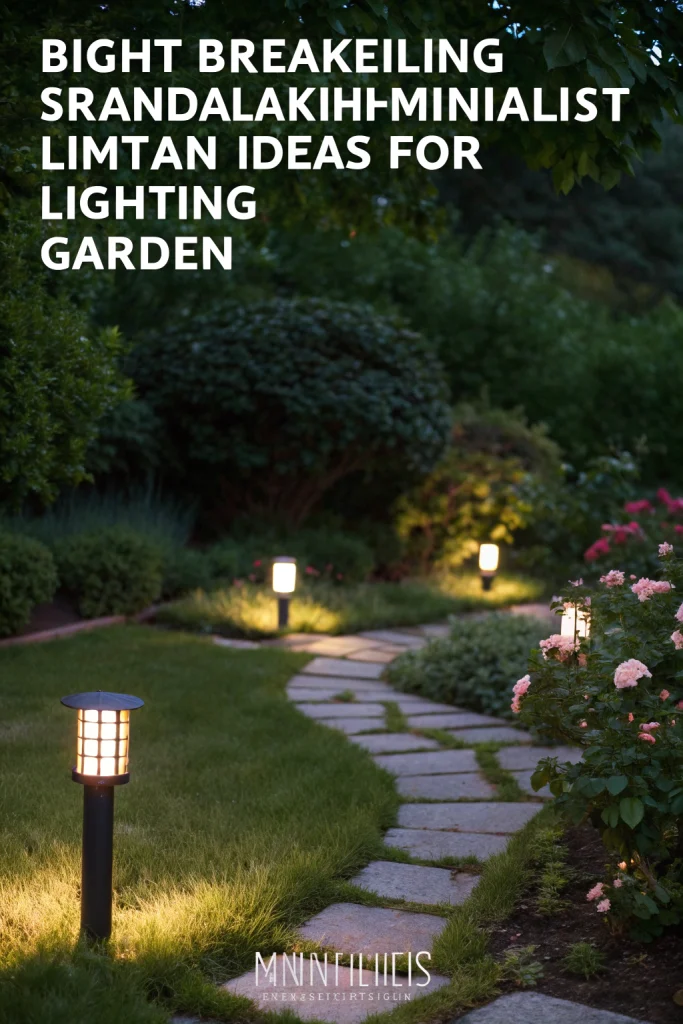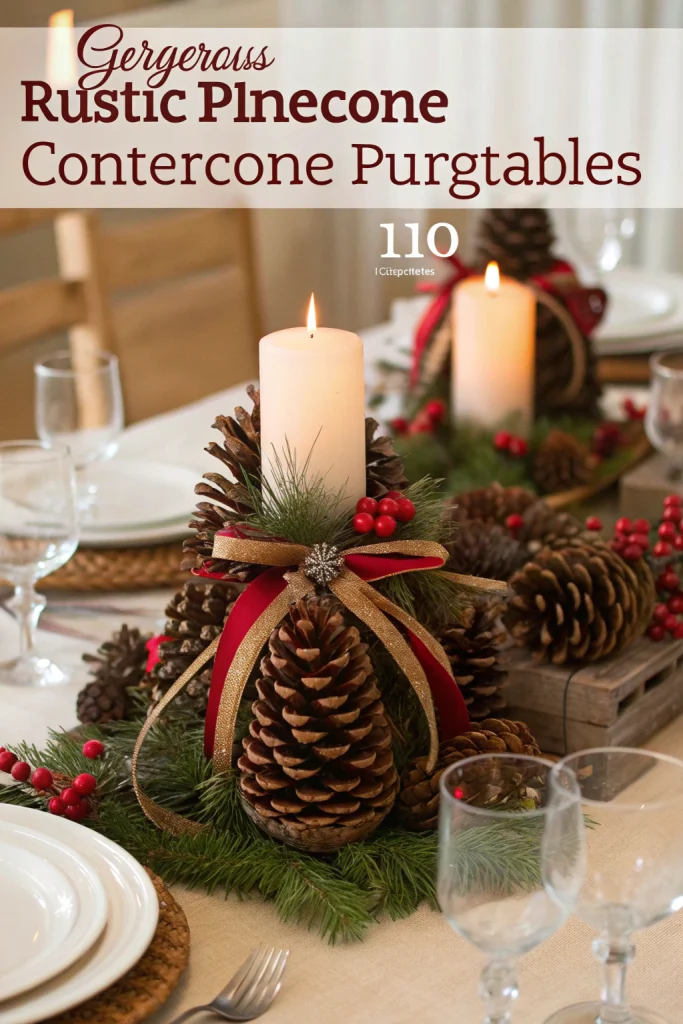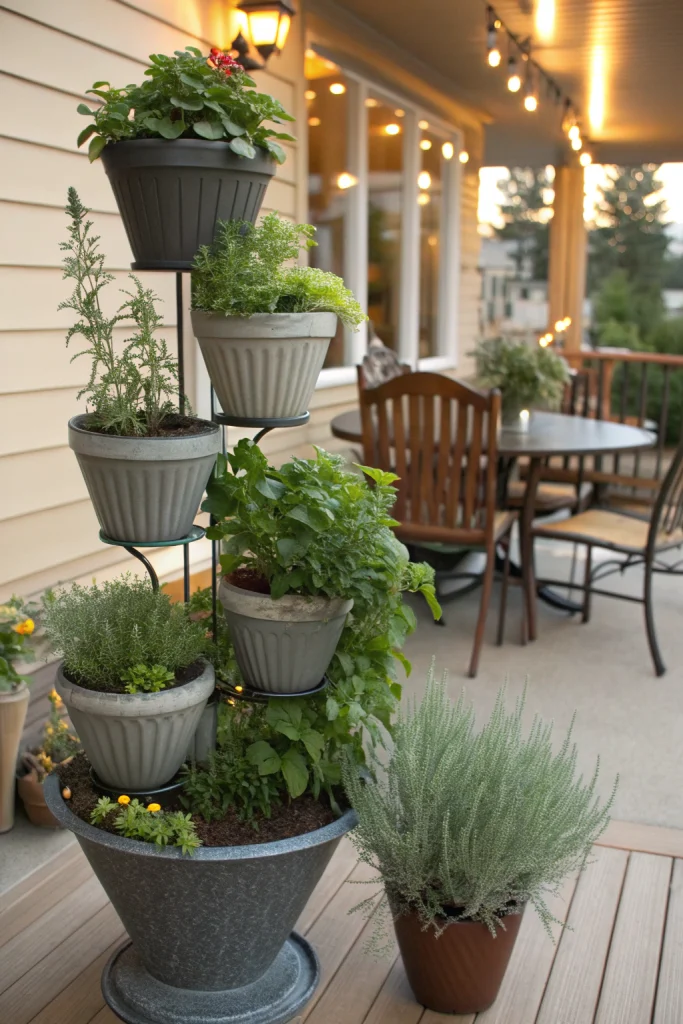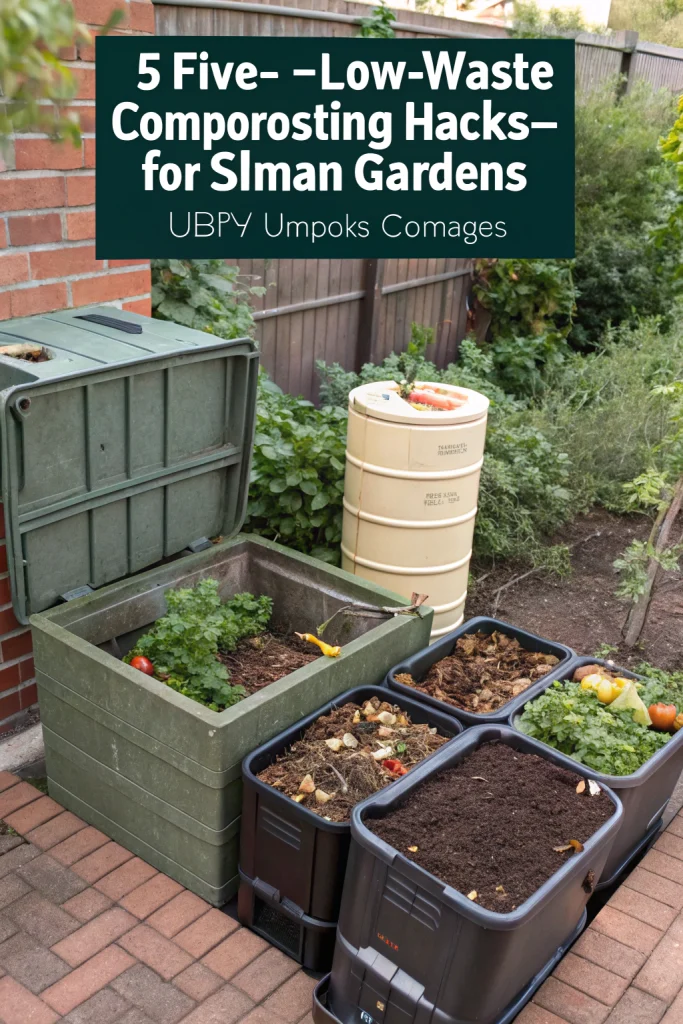Table of Contents
ToggleScandinavian, Minimalist, Garden, Lighting: Sustainable Winter Prep for a Thriving Spring
Scandinavian, Minimalist, Garden, Lighting blends practical, low-cost techniques with real environmental impact. Use these eco-first methods to reduce waste, save water, build living soil, and support pollinators—all while keeping your garden beautiful and productive through the cold season.
[lwptoc]
Why Scandinavian, Minimalist, Garden, Lighting Matters This Season
Winter prep is when smart gardeners get ahead: leaves become mulch, rain becomes irrigation, and “waste” becomes soil food. With Scandinavian, Minimalist, Garden, Lighting, you set resilient foundations now—so spring growth is faster, healthier, and cheaper.
Core Materials & Tools for Sustainable Gardening
Adopting the principles of Scandinavian, Minimalist, Garden, Lighting begins with a careful selection of materials and tools. The goal is to maximize utility, minimize waste, and choose items that are durable and eco-friendly. Instead of buying new, consider scavenging or repurposing existing materials. This not only saves money but also significantly reduces your carbon footprint.
- Dry leaves, shredded cardboard, twig cuttings: These are the backbone of your mulching and sheet-mulching strategy. Leaves provide essential organic matter and nutrients, while cardboard acts as a weed barrier and breaks down to enrich the soil. Twigs, when shredded, add structure and slow-release nutrients. Accumulate these materials throughout autumn and store them in dry bins or piles.
- Compost setup: A well-managed compost system is central to a sustainable garden. Options range from simple DIY bins made from pallets, commercial tumblers, to more advanced bokashi buckets for kitchen scraps or worm towers for containers. The choice depends on your space and volume of organic waste.
- Rain barrel with downspout diverter; watering can or soaker hose: Harnessing rainwater is a cornerstone of water conservation. A rain barrel can capture hundreds of liters of water, reducing reliance on municipal supplies. Couple it with an efficient watering can for targeted hydration or a soaker hose for slow, deep watering that minimizes evaporation.
- Reusable pots (terracotta/metal/wood) and sturdy seed trays: Ditch flimsy plastic. Invest in durable, long-lasting pots made from natural materials. Terracotta offers breathability, metal is robust, and wood provides excellent insulation. Similarly, choose high-quality seed trays that can withstand multiple seasons, or even better, explore soil blocking.
- Hand tools (stainless trowel, pruners, rake) and a simple sieve: Quality over quantity. A few well-maintained hand tools are all you need. Stainless steel resists rust, ensuring longevity. Keep pruners sharp for clean cuts that promote plant health. A sturdy rake is essential for leaf management, and a sieve helps refine compost or leaf mould for potting mixes.
Step-by-Step Method for Year-Round Sustainability
Step 1 — Build a No-Dig Base with Leaves
The no-dig method is fundamental to Scandinavian, Minimalist, Garden, Lighting, preserving soil structure, boosting microbial life, and significantly reducing weeding. Begin by laying overlapping cardboard sheets directly onto the soil, ensuring each piece laps over by 10–15 cm to prevent weeds from peeking through. Moisten the cardboard lightly to help it settle and begin breaking down. This layer is crucial for suppressing existing weeds and adding carbon to the soil. On top of the cardboard, spread a generous layer (5–10 cm) of shredded leaves. Leaves are a fantastic source of carbon, minerals, and shelter for beneficial organisms. Finish with a thin layer of finished compost. This compost introduces beneficial microbes and essential nitrogen, which helps balance the carbon-heavy leaves and accelerates decomposition. This layered system not only suppresses weeds but also acts as a slow-release nutrient bank, buffers soil temperature, and significantly improves soil structure and water retention, preparing your beds for vigorous spring growth.
Step 2 — Capture Rain & Water Smarter
Water conservation is a hallmark of the Scandinavian, Minimalist, Garden, Lighting approach. Begin by installing a rain barrel system. A simple downspout diverter can collect hundreds of liters of rainwater, which is superior for plants as it’s chlorine-free and at ambient temperature. Position your rain barrel close to areas needing irrigation. When watering, apply water early in the day to minimize evaporation and allow foliage to dry before nightfall, reducing fungal issues. Group container plants according to their water needs; this makes watering more efficient and prevents over or under-watering. Mulching containers with a layer of leaves (2-3 cm) dramatically reduces evaporation, keeping soil moist for longer. For potted plants, add saucers filled with a layer of gravel beneath them. The gravel allows excess water to drain while creating a micro-humid environment as water evaporates from the saucer, subtly increasing humidity around the plant and reducing leaf-level water loss.
Step 3 — Feed Soil Life Naturally
Healthy soil is the heart of any sustainable garden. Embrace natural composting methods to recycle organic waste back into your garden. Start a ‘cold’ compost pile for autumn leaves, mixed occasionally with nitrogen-rich materials like coffee grounds or green kitchen scraps. Cold composting takes longer but requires less active management. For kitchen scraps, consider a bokashi system indoors; this fermentation process breaks down food waste quickly and can then be trenched directly into garden beds, enriching the soil with beneficial microbes and nutrients. For sowing, sieve last year’s leaf mould. Leaf mould, broken down leaves, creates a fine, crumbly, and wonderfully fertile medium. Its excellent water retention and nutrient content make it perfect as a seed-starting mix, providing a gentle, nutrient-rich environment for delicate young seedlings without harsh chemical inputs.
Step 4 — Balance Pests with Habitat
Instead of reaching for synthetic pesticides, adopt an ecological approach to pest management. This principle, integral to Scandinavian, Minimalist, Garden, Lighting, focuses on creating a balanced ecosystem where natural predators keep pests in check. In autumn, leave some spent seed heads on plants. These provide vital food for winter birds, which in turn help control insect populations. Create a ‘habitat corner’ or ‘bug hotel’ using bundles of hollow stems, fallen sticks, and leftover leaves. This provides shelter for beneficial insects like ladybugs, lacewings (predators of aphids), and solitary bees, encouraging them to overwinter in your garden. Only resort to mild, organic sprays (like diluted soap, neem oil, or garlic spray) as a last resort, and apply them judiciously. Better yet, practice companion planting during the growing season; certain plants naturally deter pests or attract beneficial insects, reducing the need for intervention later.
Environmental & Cost Impact of Embracing Scandinavian, Minimalist, Garden, Lighting
The cumulative effects of adopting Scandinavian, Minimalist, Garden, Lighting principles are substantial, creating a symbiotic relationship between your garden and the broader environment. Environmentally, the most significant impact comes from waste reduction and resource conservation. By utilizing fallen leaves, you divert countless bags of organic matter from landfills, where they would otherwise contribute to methane emissions as they anaerobically decompose. Instead, these leaves become valuable mulch, compost, or leaf mould, enriching your soil. Rain capture through barrels dramatically cuts down municipal water usage for irrigation, especially vital in regions facing water scarcity. The deep mulching and improved soil health further reduce the need for supplemental watering by enhancing the soil’s moisture retention. This not only conserves water but also decreases your household water bill. Building habitat zones, leaving seed heads, and avoiding synthetic chemicals fosters biodiversity. You create a haven for pollinators, beneficial insects, and birds, strengthening the local ecosystem and making your garden more resilient to pests naturally. This reduces the need for harmful chemical interventions that can decimate non-target species. The increase in soil organic matter through composting and mulching sequesters carbon, playing a small but meaningful role in mitigating climate change. The reliance on natural processes means a significant reduction in emissions associated with the production and transportation of chemical fertilizers and pesticides.
From a cost perspective, the benefits are equally compelling. The “free” inputs are perhaps the most attractive aspect. Fallen leaves, kitchen scraps, and cardboard are all readily available and cost nothing, directly replacing expensive bagged mulches, soil amendments, and fertilizers. Investing in a rain barrel is a one-time cost that quickly pays for itself through reduced water bills. Similarly, durable hand tools and reusable pots, while an initial outlay, eliminate the recurring expense of flimsy plastic alternatives. The focus on soil health reduces the need for costly chemical inputs, while companion planting and natural pest control minimize expenses on pesticides. Over time, gardening employing Scandinavian, Minimalist, Garden, Lighting methods becomes self-sustaining and significantly cheaper than conventional methods, allowing you to allocate your gardening budget towards more interesting plants or long-term structural improvements rather than recurring consumables. The long-term return on investment comes not just in financial savings but also in the increased vitality and productivity of your garden, making it a truly rewarding and sustainable endeavor.
Advanced Eco Hacks for the Dedicated Gardener
For those looking to deepen their commitment to sustainable gardening with Scandinavian, Minimalist, Garden, Lighting, these advanced eco hacks offer further ways to boost soil health, conserve resources, and enhance garden resilience.
- Charge homemade biochar in compost tea before mixing into beds: Biochar is highly porous carbon that improves soil structure, water retention, and nutrient availability. However, it’s most effective when “charged” or inoculated with nutrients and microbes. Soak your biochar for several days in nutrient-rich compost tea—a liquid extract from finished compost. This allows the biochar to absorb beneficial microorganisms and soluble nutrients, turning it into a powerful soil amendment when added to your beds.
- Swap plastic seed trays for soil blocks: Eliminate plastic waste entirely from your seed-starting process by using a soil blocker. This tool compacts moist potting mix into self-contained blocks, creating a perfect environment for seedlings to grow without the need for individual pots. Soil blocks also promote stronger root systems as roots are air-pruned when they reach the edge of the block, preventing circling and encouraging outward growth.
- Try milk-jug winter sowing for hardy perennials and salad greens: This ingenious method mimics natural stratification and provides a mini-greenhouse effect. Cut translucent plastic milk jugs in half horizontally, leaving a small hinge. Fill the bottom with several inches of potting mix, sow seeds for hardy perennials, cold-tolerant vegetables (like lettuce, spinach, arugula), or annuals that benefit from cold stratification. Tape the jug back together, leave the cap off for ventilation, and place outdoors. The jugs protect seeds from harsh weather while allowing natural temperature fluctuations to encourage germination at the right time.
- Insulate patio pots with cardboard jackets and leaf fill to protect roots: For container gardeners in colder climates, protecting roots from freezing is crucial. Create an insulating jacket around your patio pots using cardboard or old blankets. Cut pieces to fit the perimeter of the pot and secure them with twine or tape. Fill the space between the pot and the jacket with dry leaves, straw, or shredded newspaper. This adds a vital layer of insulation, preventing the soil from freezing solid and protecting sensitive root systems from winter damage, aligning perfectly with the protective ethos of Scandinavian, Minimalist, Garden, Lighting.
Design & Aesthetics (Keep It Beautiful with Scandinavian, Minimalist, Garden, Lighting)
Integrating Scandinavian, Minimalist, Garden, Lighting principles doesn’t mean sacrificing beauty; in fact, it often enhances it through thoughtful, functional design. The aesthetic should be one of understated elegance, where natural elements and simple forms create a sense of calm and order. Think about the clean lines and functionality that define Scandinavian design, bringing those qualities into your garden space.
Consider using recycled-wood edges for raised beds or pathways. Not only is this sustainable, but the natural timber also softens the landscape and adds a rustic charm. Unfinished or lightly treated wood will age beautifully, blending seamlessly with the garden’s evolving textures. Embrace mossy planters; terracotta pots that have developed a patina of moss and lichen speak to age and natural integration, and they offer a subtle texture that contrasts with the lush greens of your plants. This is a far cry from sterile, perfectly clean surfaces, instead celebrating the subtle imperfections of nature.
Lighting is where the “lighting” aspect of Scandinavian, Minimalist, Garden, Lighting truly shines and contributes to the ambiance. Opt for warm solar path lighting. Placed strategically, these lights can highlight pathways, accentuate architectural plants, or create inviting pockets of glow. The soft, diffused light evokes a cozy, hygge-like atmosphere, making the garden an extension of your indoor living space even on colder evenings. Avoid harsh, bright lights; instead, aim for subtle illumination that enhances rather than overwhelms the natural darkness. LED string lights, powered by solar, can be draped around pergolas or through dense shrubbery for a magical, festive feel.
To maintain cohesion, choose a restrained palette for your plants and hardscaping. Instead of a riot of clashing colors, opt for a harmonious blend of greens, whites, silvers, and deep purples. Focus on structural plants with interesting forms and textures that provide year-round interest. Repeat textures—like the fine fronds of ferns, the smooth surface of river stones, and the rough bark of a tree—to create visual rhythm and continuity throughout the garden. This minimalist approach allows individual plants and elements to stand out, fostering appreciation for their unique beauty and ensuring your garden feels serene, intentional, and deeply connected to nature.
Common Mistakes to Avoid in Scandinavian, Minimalist, Garden, Lighting Practices
Even with the best intentions, it’s easy to fall into common pitfalls that can undermine the principles of Scandinavian, Minimalist, Garden, Lighting. Being aware of these mistakes can help you steer clear and ensure your sustainable gardening efforts are truly effective.
- Using peat moss: This is arguably one of the most significant environmental missteps in gardening. Peat bogs are vital carbon sinks and delicate ecosystems that take millennia to form. Harvesting peat moss releases vast amounts of stored carbon into the atmosphere and destroys these unique habitats. Always choose sustainable alternatives like leaf mould, coir (coconut fiber), or well-aged compost as a base for potting mixes and soil amendments.
- Over-tidying: The Scandinavian minimalist aesthetic can sometimes be misinterpreted as a need for sterile neatness. However, in a sustainable garden, a degree of “wildness” is essential. Over-tidying, such as removing all fallen leaves, cutting back every spent perennial in autumn, or clearing every bit of dead wood, removes crucial habitat and food sources for beneficial insects, pollinators, and overwintering wildlife. While it’s important to remove diseased plant material and address safety hazards, consciously leave some areas a little “messy.” This includes leaving a few seed heads for birds, creating brush piles, and letting leaf litter accumulate under shrubs. These areas become vital shelters and food sources, contributing to the biodiversity and resilience of your garden.
- Watering at midday: This is simply inefficient and wasteful, especially when striving for water conservation. Watering during the hottest part of the day leads to significant evaporation losses before the water can reach the plant roots. The best times to water are in the early morning or late evening. Early morning watering allows the water to penetrate the soil before the sun’s intensity increases, and foliage has time to dry, reducing fungal issues. Late evening watering also minimizes evaporation, but be mindful of leaving plants wet overnight in humid climates.
- Heavy fertilizing in cold soils: Plants naturally slow their growth and nutrient uptake in cold temperatures. Applying synthetic fertilizers to cold or dormant soil is largely ineffective and can even be detrimental. Much of the fertilizer will leach away into groundwater before plants can utilize it, polluting waterways. Moreover, synthetic fertilizers can harm the delicate soil microbiome that is less active in cold conditions. Instead, focus on feeding the soil microbes themselves with organic matter like compost and leaf mould. These materials build long-term soil health and provide nutrients to plants in a gradual, natural way when they are ready to absorb them as temperatures rise.
Storage & Winter Care for a Resilient Garden
Thoughtful storage and winter preparation are key components of a truly sustainable garden, aligning perfectly with the durable and organized principles of Scandinavian, Minimalist, Garden, Lighting. Proper care during the dormant season ensures that your resources are preserved, tools remain functional, and your garden is primed for a successful spring.
Firstly, cover your rain barrels. While designed to collect water, leaving them exposed to freezing temperatures with water inside can cause them to crack or burst. Either fully drain them or ensure they are covered to prevent ice formation. This protects your investment and ensures they are ready to collect spring rains. Aerating your compost pile periodically throughout winter, even if it’s a cold compost, helps decomposition continue, albeit slowly. Use a compost aerator or a pitchfork to turn the pile, introducing oxygen and preventing anaerobic conditions that lead to foul odors. This also breaks down materials more evenly.
If you’re making leaf mould, which is crucial for sustainable soil amendments, label your leaf-mould pens or bags by date. Leaf mould takes 1-2 years to fully decompose into a rich, crumbly material suitable for potting mixes. Knowing the age of your leaf mould allows you to use the most mature product first, ensuring optimal quality for your plants. Clean and oil all your garden tools before storing them. Remove any soil and debris, sharpen blades if necessary, and apply a thin layer of linseed oil or mineral oil to metal parts to prevent rust. Wood handles can also benefit from a light oiling to prevent drying and cracking. This small effort extends the lifespan of your tools, reducing the need for replacements.
Finally, store dry cardboard flat and accessible. This seemingly simple step is incredibly useful for the impromptu sheet-mulching opportunities that arise. As beds free up, or new areas are identified for development, having a stash of cardboard ready allows for quick, no-dig preparation. This prevents weed growth, improves soil rapidly, and maintains the tidy yet natural aesthetic of a Scandinavian, Minimalist, Garden, Lighting landscape. These winter practices are not just about maintenance; they are about preparing for the next cycle of growth, embodying the foresight and efficiency inherent in sustainable gardening.
Conclusion
Scandinavian, Minimalist, Garden, Lighting proves greener gardening is easier, cheaper, and more resilient. Start with leaves, water capture, soil life, and habitat—your spring garden will repay you with vigor and fewer inputs. By consciously reducing waste, conserving resources, and nurturing the natural processes of your garden, you create a space that is not only beautiful and productive but also profoundly environmentally friendly. This approach is about working with nature, not against it, fostering a healthier ecosystem and a more sustainable home. Embrace these thoughtful techniques this season, and watch your garden transform into a vibrant, self-sufficient haven that reflects the best of Nordic design and ecological wisdom.
FAQ About Scandinavian, Minimalist, Garden, Lighting
- Can I start now? Yes—The beauty of Scandinavian, Minimalist, Garden, Lighting is its adaptability. You can absolutely start implementing these principles right now, regardless of the season. Focus on immediate, low-effort actions that yield significant long-term benefits. Begin by gathering fallen leaves for mulch or leaf mould. Install a rain barrel to start capturing water immediately. Begin a simple no-dig bed preparation using any available cardboard and leaves. And take the time to clean and oil your garden tools for their longevity. These initial steps alone will set a strong foundation for a more sustainable and resilient garden.
- Only a balcony? No problem—the principles of Scandinavian, Minimalist, Garden, Lighting are highly scalable. For balcony or small-space gardening, focus on container-specific solutions. Utilize worm towers directly within larger planters to process kitchen scraps and provide continuous fertilizer. Bokashi systems are excellent for fermenting all food waste indoors, which can then be lightly incorporated into container soil. Insulate patio pots with cardboard jackets and leaf fill to protect roots from temperature extremes, mimicking the protection of in-ground planting. Choose compact or dwarf varieties of plants and prioritize vertical gardening to maximize your limited space, always keeping functionality and aesthetics in balance.
- Special tools required? No—one of the core tenets of minimalism in Scandinavian, Minimalist, Garden, Lighting is to work with what you have and invest in quality where necessary, rather than accumulating specialized tools. For much of the work described, a sturdy rake for leaf management, sharp hand pruners for clean cuts, and a basic compost bin (which can often be constructed from repurposed materials like pallets or old fencing) or even just heavy-duty garbage bags for making leaf mould, are sufficient. The emphasis is on technique and material stewardship, not on a vast arsenal of expensive gadgets.
- Science behind this? Absolutely—the methods advocated by Scandinavian, Minimalist, Garden, Lighting are deeply rooted in ecological science and permaculture principles. No-dig gardening techniques are supported by studies showing improved soil structure, increased microbial activity, and better water retention. Rainwater harvesting is an established method of water conservation. Composting and creating leaf mould are essential for building organic matter, which enhances soil fertility, sequesters carbon, and feeds the soil food web. Encouraging biodiversity through habitat creation is a proven strategy for natural pest control and ecosystem resilience. These practices are not just traditional; they are scientifically sound approaches to creating healthy, productive, and sustainable garden environments.
- Healthline — Growing food in limited space
- Harvard T.H. Chan — Plate & Planet (sustainability)
- Medical News Today — Health benefits of gardening




